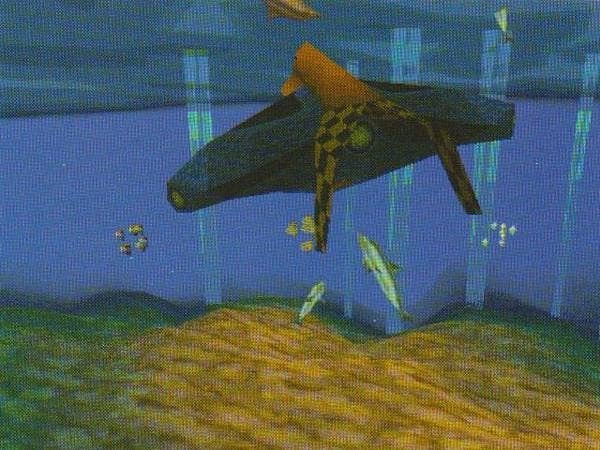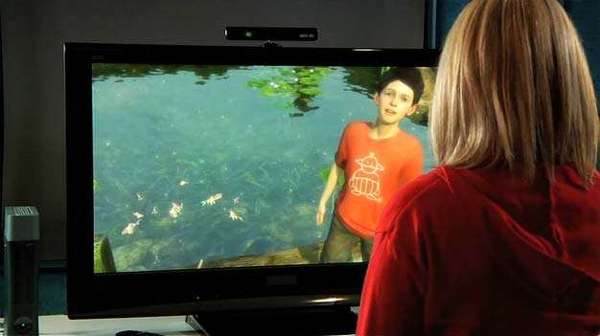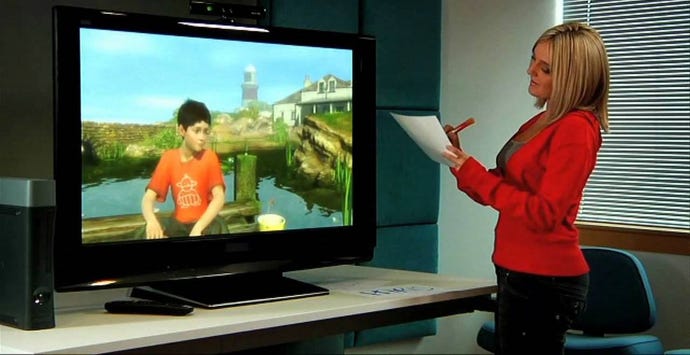The Lost Worlds of Lionhead and Bullfrog
From the Eurogamer archives: Chris Donlan looks back at some of these two studios' more ambitious cancelled projects.
This article first appeared on USgamer, a partner publication of VG247. Some content, such as this article, has been migrated to VG247 for posterity after USgamer's closure - but it has not been edited or further vetted by the VG247 team.
With a brace of Fables behind his old studio and the Curiosity project brought to a successful conclusion, there's a danger that future generations may never know the sweet, salty pain of a Peter Molyneux-hyped project that fails to materialize. Bearing all that in mind, it seems like a good time to pick over a few of the most interesting Lionhead and Bullfrog games that never made it to shelves -- and maybe shed a tear or two along the way.
Here's the important thing, though: getting cancelled isn't the only things these fascinating projects have in common. They all share a certain wayward ambition and an eagerness to take players somewhere genuinely new. They're a testament to two studios where designers and artists have always been encouraged to think about the medium in different ways, and a great way to celebrate the team's creative legacy.
Enough! Let's look at the wild, beautiful promise of a few projects that never made it. For a minute or two, let's just ponder what we missed out on.
Creation
PC / Cancelled: 1997
In fact, Peter Molyneux probably hasn't been involved in that many more cancelled projects than most developers. The reason it stings so much in his case is that he's been so open about discussing work in progress and so good at bringing forthcoming games to life in preview interviews. Remember the golden acorn? Nobody from Infinity Ward ever got us all hyped about the prospect of planting trees. Not even in ranked multiplayer where it would really add something to the churn.
Creation's emblematic of the Molyneux approach. In the early 1990s, when Bullfrog was already busy developing Theme Park and Magic Carpet, PM suggested that this weird undersea strategy-action game was more exciting than either of them. More exciting than Arabian nights and over-salted fast food? That's pretty exciting.
"We had sharks with frickin' laser beams long before Austin Powers."

It's not hard to see why he thought that. Conceived in 1991 as a kind of evolutionary puzzler, by 1994, Creation was being touted as a 3D base defense game in which you kept your seabed HQ safe from attackers by, y'know, breeding fish to act as soldiers. The team spent months ensuring that the subsurface landscapes twinkled and shimmered in the correct watery manner, and even now, all it takes is a screenshot depicting a trio of bolshy-looking turtles to summon a little twinge of wistful pain. How weird this seems. How exotic. Could the fish-wrangler genre ever have fitted in alongside the RPG or the squad-based shooter? Why don't we live in that universe?
"There had always been an ambition within Bullfrog to do a game called Creation, since before Populous," says Alex Cullum, who briefly did get to live in that universe. Now the design director at Disney Interactive Studios, in November 1995 he joined Creation as the project's sole level designer.
"There had been several concepts and prototypes worked up before my time," he says. "I suspect the original idea was something more akin to Will Wright's Spore. However, by '95, Creation had evolved into a full product with its own identity, being lead by Guy Simmons, who later went on to create Startopia."
At the time Cullum signed on, Creation revolved around the battle to transform an alien water-world. "The player controlled a submersible from a first-person perspective," he says. "The engine was a modified version of the Magic Carpet 2 engine and the limited draw distance of 3D engines of the time actually worked incredibly well in an underwater game: there was this amazing sense of 'being' underwater as structures and features emerged out of the darkness of the depths in front of your sub's spotlights.
"The game was actually set in the same universe and timeline as Syndicate, with rival corporations competing to claim this off-world prize," he continues. Stop already, we all want to play this. "The player and their rivals used a derivative of Persuadertron technology to control sea life and then give the animals commands. The player's goal was two-fold: terraform the planet and defeat the rival 'evil' terraforming corporation, and they could do either task themselves or send off their dolphin minions to do it for them.
"Unit control was handled via a fantastic 3D map overview and the breadth of control the player had over their dolphins was very powerful. Of course, your rivals also had controlled creatures working for them too. We had sharks with frickin' laser beams long before Austin Powers. There was a real thrill in the juxtaposition of ordering units from an overview screen and then swapping back to first person to see your orders carried out with your own eyes." So why did it all fall apart? "Creation was an ambitious game and there wasn't much else out there at the time that was merging real-time strategy and resource management and first-person combat," says Cullum, "so there was a lot of discovery and trial-and-error in getting everything to work and balance together. That being said, by 1997 the design was pretty much locked down. I was present in the meeting where the game was cancelled; we presented our latest build that we were all very proud of, but at the end of the presentation there was the simple phrase: 'Sub games don't sell.' And that was that."
Gah.
The Indestructibles
PC / Cancelled: Mid-1990s

Cripes, this is a sad one: The Indestructibles sounds glorious.
Setting its game in the early decades of the last century, Bullfrog's aim was to create a convincingly pulpy world of superheroes and super villains in which you designed your own meta-human and then went out into a massive 3D city to chuck cars around, boot people righteously in the nuts and generally act in a larger-than-life manner. It's Crackdown from the era of Elastica, basically.
It gets better. According to a CGW preview from 1995, the game's chunky skyscrapered landscapes were surprisingly deformable, and the battles you got into would be based on physics rather than canned animations. Forward-thinking stuff, right? Someone at Bullfrog once described The Indestructibles as "an action-beat-'em-up-strategy-everything game," incidentally. Why did that never become the only surviving genre?
When I ask Fin McGechie, the lead artist for the project's initial incarnation, what most excited him about all these futuristic features, he doesn't have to think very hard. "At the time, we were asked that question a few times and the answer was always the same: it was going to be bigger than anything else that had been done. We were told to aim high, and we wanted to create a large open-world city with player freedom and events randomly kicking off.
"That's something that doesn't seem too ambitious now, but back then it was a bit more of a leap of faith. I remember we went to the EA office to see the motion-capture suite and see a game they were working on at the time and it was quite an eye-opener. We had a three-man team with minimal resources and they had millions: a massive team, an off-site concept team and they'd even done special dwarf motion capture, all in a two-year 'pre-design' phase. We had a hard time getting them to believe us that we only had a three-man team. And no dwarves."
How far did development on The Indestructibles get? It got to the Chatting to Comic Book Legends stage, for sure. "I do recall having a meeting with Dave Gibbons of Watchmen fame and nervously showing him my character designs and talking to him about the game design," says McGechie. "He had some previous game experience and was very interested in what we were up to. I was never sure if he was up for working on it or what, but I'm sure we could have benefited from his experience. I remember he had a great interest regarding 3D and new technology and how he could use it in comic book creation."
"Bullfrog was going through a lot of changes at the time and the freedom that made the company so successful was disappearing."
Were the game's technical ambitions the reason the project struggled to come together? "The destructibility was very crude," admits McGechie. "It had never really been done before, and to be honest wasn't really done even then. I remember seeing a building collapsing -- shrinking into the ground -- with particles and dust covering unwanted areas, and at the time it was a wow moment, but I think it was a struggle to get even that. It felt like technology was behind what we wanted to do.
"It was never a smooth development," he concludes. "Bullfrog was going through a lot of changes at the time and the freedom that made the company so successful was disappearing. After a while it was apparent that the game probably wasn't going to get done." McGechie left to form a new studio, Mucky Foot, with some colleagues, while The Indestructibles went through an internal reboot that took it in a new, slightly more linear, direction. That didn't work out either, sadly, but the idea behind the game proved hard to forget.
"I would like to think it would have made some sort of impact," muses McGechie, who's currently working on a new super-secret project that he promised to tell me more about in the future if I didn't ask what "Fin" is short for. "We always aimed to do that at Bullfrog. As for what it could have been, I think Crackdown is a close possible representation, but the technology wasn't that advanced, so it would be a greatly cut-down version with regards to poly-counts, draw distances and what was possible, so the comparison is more in essence than actuality.
"The industry is a fickle thing: who knows how it could have played out? It might have bombed and sold three copies, or it could have been a ground-breaking mega-hit and we could be here talking about The Indestructibles 4. Whatever. I look back on those days with great fondness: working with a bunch of like-minded guys on some great games. Some of the games may not have seen the light of day, but the enthusiasm and creativity never waned. Happy days."
B.C.
Xbox / Cancelled: 2004
Yes-yes-yes, so dinosaurs and cavemen never actually co-existed, but who cares? Stop ruining everything, Professor Pedantic. After all, B.C. was a game that was going to let you punch a T-Rex, roll boulders into velociraptors, and shoot up pterodactyls with flaming arrows. Can't you just enjoy that for once?
Another entry in the file marked "wildly ambitious" -- the file itself is made of coelacanth flesh and stitched together with diamond wire -- B.C. should have been a kind of harshly Darwinian action game in which you and your plucky group of humans murdered your way to the top of the prehistoric food chain, one animal at a time. It was created by Lionhead's satellite studio Intrepid, and even without the tribe management stuff and the non-linear progression, it's a project that retains a strong appeal to this day.
"Hunting too many raptors could result in massive dodo population explosions where they would end up taking over the level, prompting the player to have to go on a massive dodo cull."

"The game was a true sandbox," says Creation's Alex Cullum, who went on to work as lead designer on B.C. "It was all about discovery and playing with the environment and ecosystem to better your tribe through discoveries such as bows and fire. You were managing the eco-system to ensure your tribe survived and thrived. Everything in the game was simulated -- physics, fire, even the ecosystem and food chain. In fact this was one of the biggest design challenges: outcomes of actions could very often not be predicted.
"The fire system, for example, could result in massive level-consuming bush fires, which brought the frame rate to its knees," he laughs. "The ecosystem in particular caused problems: the food chain was realistically simulated -- dodos were at the bottom of the chain working upwards to raptors all the way to the T-Rex. Even the fruit growth was simulated and had a role in the food chain. Creatures hunted other creatures to survive even when the player was not there, and it was in a form of balance.
"Of course, this meant that the player's actions could throw the whole system out of balance with unexpected results. Hunt too many dodos and not only would your tribe become hungry, but other creatures higher up the food chain would start to die out -- or become more aggressive in their attacks on the camp. Likewise, hunting too many raptors -- you could harvest the meat from fallen dinosaurs for your tribe -- could result in massive dodo population explosions where they would end up taking over the level, prompting the player to have to go on a massive dodo cull.
"But this was the point: we wanted to give the player a real world with its own understandable rules and allow them to play with it. Any actions would have a result, and often this result would force the player to take more actions to try and find a way of fitting into this balanced eco-system."
Regardless of whether you were always more of a Jetsons fan than a Flintstones fan, it's hard not to watch the videos of B.C. -- with those misty, primeval skies, those golden savannahs, those mountains, caves, and endless arcing splurges of dino gore - and not want to mess around in Intrepid's sandbox for a couple of hours. Drums, claret, people smacking each other around with clubs: B.C. promised to be a strangely Shatnerian take on the ancient world, and that was entirely intentional.
"Looking out over the plains and watching dinosaurs flock and hunt each other was truly unique. Everybody on the team believed 'this is going to be amazing', every hour of every day."

"The game was very much going for that fictitious pre-historic vibe: the 10 Million Years BC kind of feel," says Cullum. "It was cavemen versus dinosaurs, but at the same time everyone wanted it to feel authentic. The cavemen even had their own language. But most of all, we wanted it to feel visceral. This game was all about survival. This was not sanitized violence, it was intense, kill-or-be-killed, desperate violence."
So what went wrong? "We were quite far along," says Cullum. "Everything was working, and we were at the stage of making everything work together and then handling the player information systems that were necessary to give the players feedback on all the implications of their actions. Ultimately, it was the ambition of the project that was its downfall. I have no doubt that B.C. would have become a truly unique and beautiful game but it was a question of how long that would have taken."
I ask Cullum if he has a favourite moment from B.C.: if he had an encounter or a testing session which drove home just how amazing the game could be. "To this day I still believe B.C. was one of the most beautiful games I have ever seen," he replies. "Watching the sun come up over your camp and seeing your tribe go about its business and living was something you never got bored of. Looking out over the plains and watching dinosaurs flock and hunt each other was truly unique. Everybody on the team believed 'this is going to be amazing', every hour of every day.
"Intrepid was a collection of some of the most talented coders, artists and designers, all doing their best work on something that was going to be very, very special. Many of the things B.C. was doing are commonplace now: day-night cycles, physics simulation. But it was the simulation of a living world that felt truly unique, and very few titles have achieved that -- perhaps for good reason.
"Ideas were floated towards the end of the project about moving towards a more scripted and linear experience," Cullum concludes, "but they did not gel with the team's vision for the game." (The last time I was in Guildford, incidentally, I saw a man walking around wearing an "I Survived B.C." T-shirt, and I don't think he was Canadian, if you know what I mean. He still looked a little shaky and wounded as he ambled out of the local branch of Muji. I doubt it was all those artisan pencil pots that had messed him up so badly.)
Unity
GameCube / Cancelled: 2004

A Jeff Minter project aimed squarely -- ha! -- at the GameCube? We live in a cruel world indeed where this one gets canned, and yet Spy Hunter powers its way onto shelves without as much as a dent in its fender.
During an interview with GameSpy back in the day, Minter described Unity as "an abstract shooter, plus a bit more." It was, in fact, a straight-up blend of arcade action, music game and lightsynth, and it was given its name, according to an Edge piece from February 2003, because it brought the legendary developer's holy trinity of interests together.
Invited to work with Lionhead after the shareware release of Gridrunner ++ caught the developer's attention -- although there may have been a little matchmaking from Edge's then-publisher James Binns -- Minter was planning something that sounds suspiciously close to being the ultimate Llamasoft project: a precision blaster with trippy art in which you could unlock 'modules' that you could then plug together to create your own visual effects. Speaking to Spong in 2007, Minter added that there would have been creatures in the game whose forms and behaviours were controlled by genetic algorithms, meaning they'd evolve across the course of a play session, too.
Unity would also build on pacing ideas from his Tempest days, blending busy shooter rounds in with more restful, point-collecting bonus areas. This was the same mix of objectives that would provide Space Giraffe with its playfully corrugated texture a few years later. It's tempting to assume that Space Giraffe is Unity in all but name, really, since that was Minter's next major project after Unity was quietly cancelled in 2004. That doesn't appear to have been the case, though. Unity was to have included arena levels as well as Tempest-styled webs, for example. That means, in a perfect world, we could have had both games. I need a moment alone, I think.
Milo and Kate
Xbox 360 / Cancelled: 2010

The highest praise I can personally pay Milo and Kate is that I remember being genuinely freaked out by it when it was announced at E3 2009. In amidst the Halos and the CODs, here was a very English game surrounding a boy -- or a girl -- and their dog. Players would talk to Milo using Kinect, and Kinect would in turn try to support an emotional connection across the divide of the TV screen. Welcome to the psychological version of the uncanny valley.
Strange -- and yet peculiarly domestic -- as it was, Milo and Kate was easily the most intriguing Kinect project announced: a game about homework, stone-skimming, and an attempt to build an engrossing adventure around the interpretation of a virtual character's moods. Over the years, Microsoft has argued that the whole thing was a tech demo rather than anything more elaborate. John Dower, Milo's drama director, who worked on the project for three years, has referred to it as a game on multiple occasions, however -- a game about creating relationships.
Tricky territory, relationships, but at least Milo and Kate can head into cancellation history knowing it was ahead of the curve. Mainstream titles -- BioShock Infinite is a good example -- are becoming increasingly interested in complex NPCs who are genuine companions rather than squad-mates or escort mission fodder, and it seems like a fascinating subject for story-led games to explore. As for Lionhead's Kinect work, a lot of it -- especially the ability to control a game from a seated position, by the looks of it -- ended up in Fable: The Journey.
